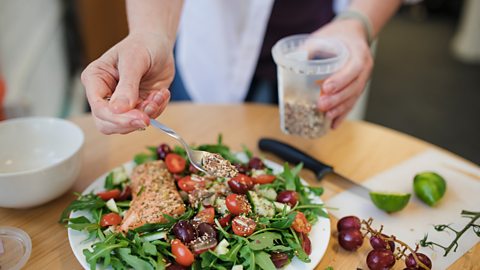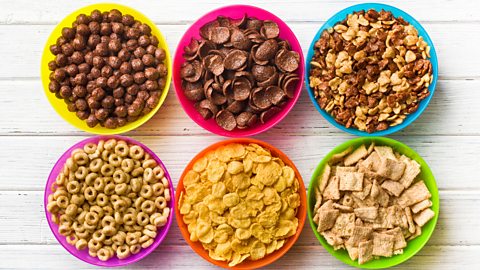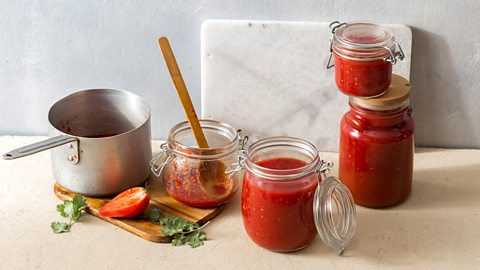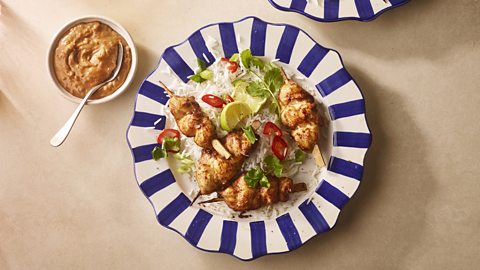Could honey reduce your hayfever symptoms?
By Hattie Ellis
It’s the claim that’s revived at the start of every hayfever season, but is it true? Or are there other health benefits to be gained?
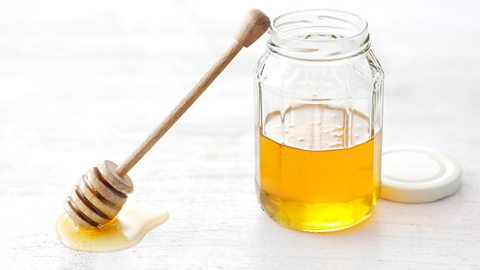
Every spring and summer people love to suggest that honey could cure your hayfever symptoms. The idea is that because bees collect pollen to make honey, by eating locally-produced honey, you’ll grow resistant to the pollen in your local area, in turn easing your hayfever response. Could this be true?
Dr Beverley Adams-Groom, senior pollen forecaster at the University of Worcester, is an expert in all things pollen related – and is currently carrying out research that sees her analyse the pollen in honey throughout the UK. So, does Adams-Groom believe honey could form part of a hayfever treatment plan?
“Although people do anecdotally report a decrease in symptoms from eating local honey, there is no scientific evidence to support this at all. However, one trial has been conducted on Malaysian Tualang honey, where symptoms were significantly reduced, and the effects lasted for a month after the participants stopped taking the honey. Whether Tualang honey would be effective for British hay fever sufferers is unknown.”
“One word of warning, though, honey is 70% sugar so taking it regularly may not be suitable for everyone.”
Does honey have other health benefits?
Aside from the hayfever myth, honey does come with some health benefits due to its antimicrobial and antioxidant properties.
Researchers at Oxford University have found honey does relieve the symptoms of coughs and colds, in particular, manuka honey (though that does tend to come at a high price). There’s even medical-grade honey which has been approved for wound-care by the NHS.
Golden spiced turmeric latte
If you have a cold, you could feel comforted with this warming drink that is made with manuka honey

While honey is sugar, unlike table sugar it also contains small amounts of vitamins, minerals, phytochemicals and beneficial enzymes. Darker honeys are generally slightly more nutritious and tend to be the ones favoured traditionally for healing, for example buckwheat and manuka.
However the NHS advises babies under one year shouldn’t consume honey due to the risk of infant botulism.
Hot-smoked salmon, rice and asparagus salad
Top your summery salad with a honey dressing
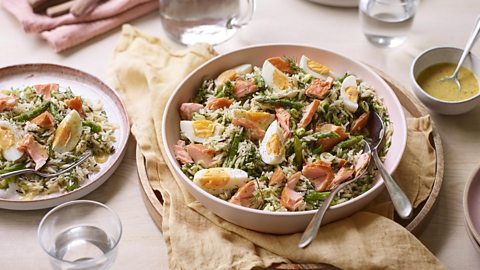
What to look out for on the label
There are two main types of honey:
Multifloral honeys come from a mixture of blossoms growing in one place, such as wildflower honey, or Greek mountainside honey.
Monofloral honeys are largely from a single type of flower. Some of the most widely available are fragrant orange blossom and lavender honeys, tangy eucalyptus, aromatically bitter chestnut, and medicinal manuka from New Zealand.
Generally speaking the mass market honeys will be more affordable while honeycomb and specialist honeys can sometimes be costly.
The more particular the information on the label, the more likely it is you're buying good honey. For example, some jars will mention a particular beekeeper or a small company with its own hives in a particular region. A named place and type of flower, or type of flora, such as forest honey, spells good news!
If the label says ‘product of more than one country’ then the honey has been blended from a number of sources and is less distinctive in taste.
Raw or unpasteurised honey may be slightly hazy from the pollen inside and it will probably crystallize at a quicker rate.
Beware of what is known in the trade as ‘funny honey’, for example honey adulterated with sugar syrup. If you open a jar and there’s no fragrance and a boiled sweet taste then you’re not getting the full joy, taste and benefits you want from honey.
Related stories
- Have hayfever? Look out for allergies to these foods
- Can some foods really improve your memory?
- How to make hitting the recommended fluid intake easy
Not just for toast
Apple pear and berry bircher
Start the day with this refreshing oaty breakfast which is sweetened with honey
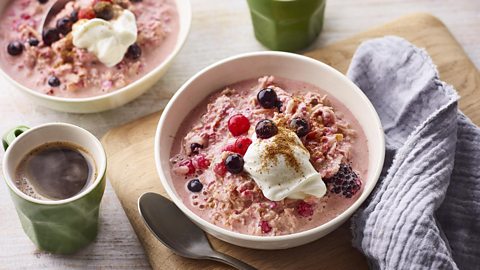
Honey transforms savoury as well as sweet dishes like a classic honey cake. Its distinctive taste means you just need a small spoonful. If you first dip your spoon into just-boiled water, the honey will slide off it easily – the same happens if you first use the spoon to measure out oil, for example in a salad dressing.
Fruit, cheese, spices, herbs and nuts are all best friends with honey, and it also brings out the sweetness in roast root vegetables such as honey roast carrots.
In Greece, it's frequently paired with halloumi or feta in a cheese, courgette and honey pie.
It is frequently used as a key ingredient in marinades, often alongside soy sauce. This chicken with coconut and brown rice utilises both, as does this glazed trout.
Use the sweetness of honey in a mix of sweet and sour, and in the combinations of hot, sweet, sour and salty which are commonly found in southeast Asian and Chinese dishes including stir-fries.
One tip from Moroccan kitchens is to add a little honey to cooked tomatoes, for example in a sauce or a tagine, to balance and enhance their sweet-sourness.
Alternatively, enter the land of milk and honey by drizzling runny honey over cheese – its good with tangy blue cheese, goat’s cheese and aged cheeses such as Parmesan and Pecorino.
Honey adds another flavour dimension to sweet dishes. You could use it to replace a sugar-glaze on a yoghurt cake, or make it part of the syrup in a fruit salad. In honey cakes and bakes, it combines well with light brown sugar. Keep the temperature lower (about 25°C) than usual though because honey burns more easily than sugar.
You often see recipes refer to ‘clear’ or ‘runny’ honey. It’s useful to have a clear, light and less expensive runny honey for everyday use and recipes that use heat, though all honeys will melt and become runny when lightly heated. Use more unique ones to add a special finishing touch such as drizzling over cheese – or indeed for drizzling over yoghurt and spreading on toast.
Originally published June 2022. Updated May 2024
